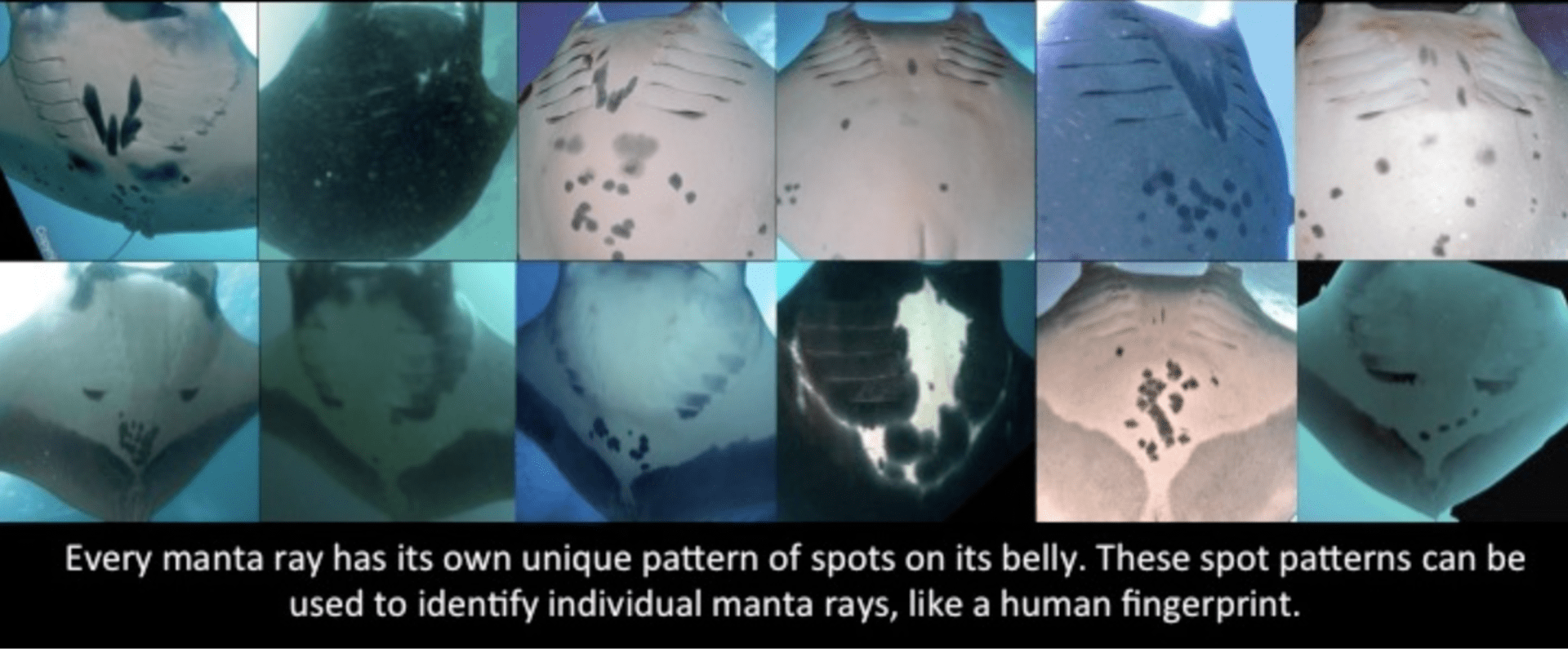Using “Camera Traps” for capturing ID photos of Mantas By Edy Setyawan
The “Camera Trap” has been widely used to observe wild animals in their natural habitats, mostly on terrestrial animals. One of the main benefits of using a camera trap is to enable researchers to capture photos or video footage of a wild animal without disturbing it; therefore the animal’s natural behavior is preserved.
In our manta ray expedition in the western part of the Dampier Strait, which was funded by National Geographic Society, we used an approach which is similar to a camera trap. We deployed an underwater camera on a manta ray cleaning station and left the camera for a certain period of time in order to capture the belly of manta rays, visiting the cleaning station. “Belly Shots” are used for identification. Every manta has a unique pattern of spots on its belly that can be used, like a finger print, to identify individuals.
So, how does this camera trap work?
This ‘camera trap’, which was equipped with a 24-hour extended battery, was set into time-lapse mode to capture photos every 1 second. It was placed on the bottom of particular reef, at which manta rays often hovers when they are being cleaned by cleaner fish. The underside of the mantas hovering on the cleaning station will be photographed by this ‘camera trap’. This operation was done mainly between 8am to 4pm.
We found that this approach was really useful, mainly because it allows us to get ID photos of mantas in a cleaning station and we don’t need to be there the whole day. Often manta rays ares hesitant to visit cleaning stations when divers are present. These ID photos, can be used for identification if the mantas are re-sighted or to document new individuals. The cameras also allow us to capture information about the time of day manta rays visit cleaning stations, how long they stay there, and how often they visit cleaning stations during the day.
Continuous monitoring of manta rays at cleaning stations will allow us to establish “visitation patterns” of reef manta rays, which are useful for manta tourism management. Apart from photo IDs, often the camera captures some other interesting images, such as sharks or some funny fish.
Edy Setyawan is the Bird’s Head Manta Ray Researcher.







































